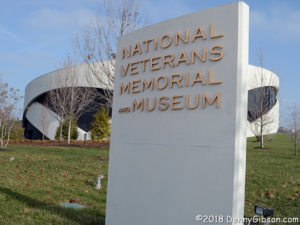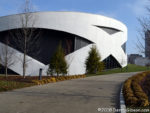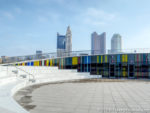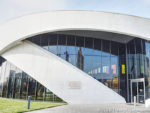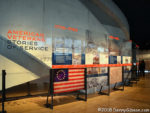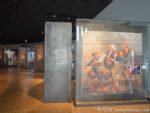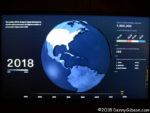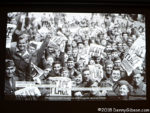 I saw a movie on Thursday. I suppose I could have made this a movie review but I was really more interested in the theater than the movie. Besides, if I used this as a review to be posted on Wednesday, I’d have to resort to some canned article for the regular weekly post.
I saw a movie on Thursday. I suppose I could have made this a movie review but I was really more interested in the theater than the movie. Besides, if I used this as a review to be posted on Wednesday, I’d have to resort to some canned article for the regular weekly post.
Thursday was the first day the newly renovated Robert D. Lindner Family OMNIMAX® Theater at the Cincinnati Museum Center was open to the public. It was partly luck that put me in the theater for the first showing of Volcanoes: The Fires of Creation and more luck that put me in one of my favorite seats near the projector. The seat was part of the renovation. It was new, a little wider than what it replaced, and quite comfortable. I took no pictures inside the theater. Some can be found online in professional reports. The picture that opens this article is the only one I took of any part of the theater. It’s a room that patrons pass entering and exiting. In the old days, huge rolls of 70 millimeter film laid on tables here to feed the big projector directly overhead. Nowadays the movie is digital and probably stored on something roughly the size of a grain of rice.
Not being certain that I would be in town for the opening, I’d made no plans and was surprised to see that loads of tickets remained for all showings. That produced a deep lack of urgency and I was equally surprised when I approached the museum and found a long line of cars working its way into the parking lots. I later learned from a staff member that it had been like this at the recently reopened Museum Center ever since schools closed down for the holidays. “And the rain helps”, she added.
I instantly realized that I should have committed to a specific time and bought my ticket online but, although the theater doors were opened well before I reached them, I was safely in my seat before the action began. As I entered, it was announced that the showing was sold out but there were still many empty seats when the lights went down. The wider seats have reduced capacity from 245 to 227 but I’m guessing that won’t often be an issue.
With the lights still up, differences in the screen were obvious. The old screen was more porous and the speakers behind it could be seen when nothing was being projected on it; A little staring revealed the seams where panels overlapped. The new screen is a little whiter and less porous; There is no overlapping of panels. Some darkish lines, which I believe are bits of the backing frame, can be detected if you look hard enough. There are still speakers behind the giant screen but now they can only be heard and not seen. They say that the new sound system sounds better and I believe them. It certainly sounds wonderful but so did the old one and a side-by-side comparison just isn’t possible.
The action on the screen starts, as it has since the theater’s beginning, with the attention gripping light tunnel. There are improvements but they are subtle and they remain subtle into the feature. The images seems crisper and a little brighter. The slightly fuzzy focus and warping that sometimes crept into the edges is virtually gone. I’m guessing that some of that is due to the theater, and some is due to the camera and recording technology. The movie begins with an animation of Earth’s collision with the planet Theia some 4.5 billion years ago. The images are sharp and crisp. They seem just as sharp and crisp when the scene changes to humans backed by a lake of lava. Although I know that the second scene came through a camera’s lens, that knowledge doesn’t prevent part of me musing about whether the lake is real or a man-made special effect. No doubt, the conditioning that comes from seeing action movies with similar scenes produced by CGI is partly to blame but it’s also a testament to just how good the “real” scene looks.
Most of the improvements are a matter of perception. One is an indisputable fact. The floaters are gone. No matter how hard theater operators tried, it was impossible to keep those over-sized rolls of film entirely dust free. Specks of dust would occasionally appear on the screen like floaters in your eye; Not with digital.
Using Volcanoes to reopen the theater was a good choice. According to the movie’s website this is the tenth theater to show it. A fair amount of science is mixed in with the dramatic visuals. Those visuals include lava lakes, billowing plumes of smoke and ash, startling eruptions, scenic landscapes, and even some animals such as elephants and giraffes on the plains of Africa. There is considerable footage of the recent lava flows in Hawaii. I found the shots of eruptions particularly impressive. Incredible power is very much in evidence here. Dark spots in the smoke and flame can appear to be floating upward like scraps of burning paper at a camp fire, but when they stop their climb and plummet downward it quickly becomes apparent that they are massive boulders tossed into the air by the volcano’s explosive force. Sometimes the recording equipment is close enough capture the thud of their landing.
A schedule for future movies at CMC has not yet been worked out. In fact, I found no information on when Volcanoes’ run here will end. Plans exist for the return of the popular Weekend Classic series In January. That will most likely start with a digital version of National Park Adventure which was the last movie to play here in the old analog days. My review includes a shot of the room at the top of this article when it was filled with gear and those big rolls of film.

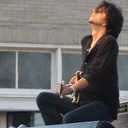
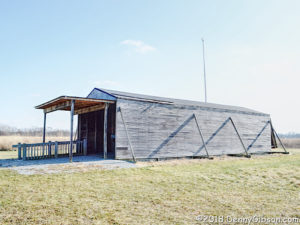
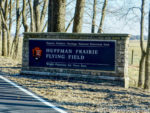
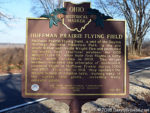
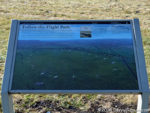
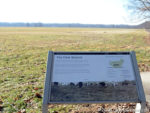
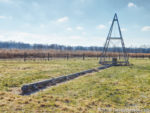
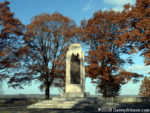
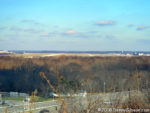

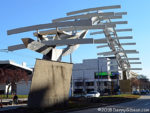

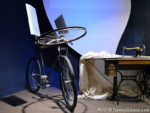
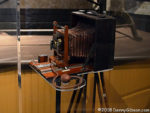
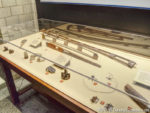
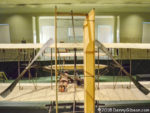
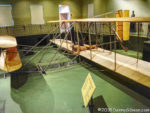
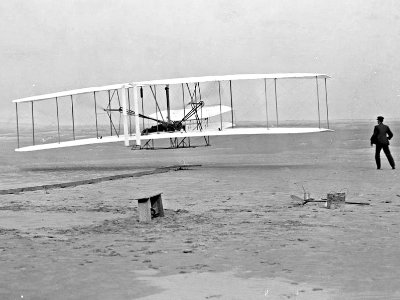 The Outer Banks and the Wright Brothers’ first flight are firmly joined in my mind. Although I’ve no problem remembering the year (1903), the month and date weren’t as easily recalled. I quickly looked it up the instant I first started thinking of the Outer Banks as a target for this year’s Christmas Escape and was very happy to learn it was December 17; Barely a week before Christmas Day, four days before the Winter Soltice, and five days before a full moon.
The Outer Banks and the Wright Brothers’ first flight are firmly joined in my mind. Although I’ve no problem remembering the year (1903), the month and date weren’t as easily recalled. I quickly looked it up the instant I first started thinking of the Outer Banks as a target for this year’s Christmas Escape and was very happy to learn it was December 17; Barely a week before Christmas Day, four days before the Winter Soltice, and five days before a full moon.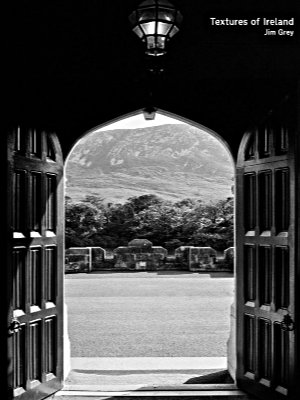 A funny thing happened on the way to this review. Not funny ha ha; Funny peculiar. This is Jim Grey’s second book. I reviewed the first, Exceptional Ordinary, in April, 2017. I figured that this review would reference that one, make some comparisons, make some jokes. It would be fun; Maybe even funny ha ha. But that review has gone missing. I don’t know how or even when. I’ve
A funny thing happened on the way to this review. Not funny ha ha; Funny peculiar. This is Jim Grey’s second book. I reviewed the first, Exceptional Ordinary, in April, 2017. I figured that this review would reference that one, make some comparisons, make some jokes. It would be fun; Maybe even funny ha ha. But that review has gone missing. I don’t know how or even when. I’ve 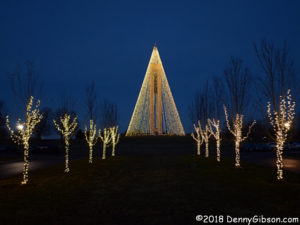
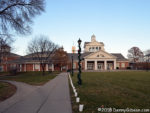
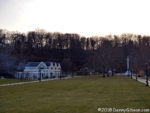
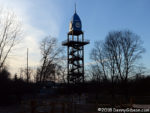
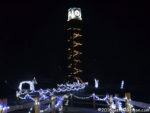
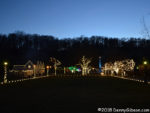
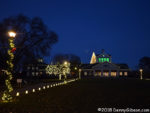
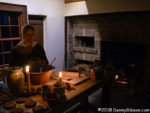
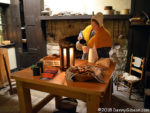

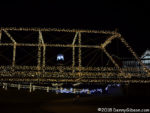


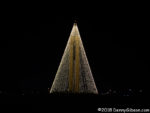
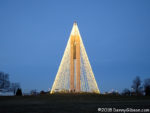
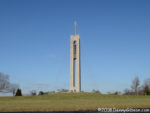
 I photograph a fair number of signs as I travel, and I know quite a few people who photograph many more than I. Not one, however, is in the same league as Debra Jane Seltzer. If sign hunting was an Olympic sport, the petite Seltzer would be buried under gold medals. Her photo expeditions are legendary. Until recently, when she and her dogs (currently four) headed out in the white Chevy van named Sparkle, they would take along a big stack of notes and marked up map printouts. Today there might still be a printed list of targets but Google maps and a smartphone have reduced the need for paper considerably. The target list is never limited to signs. It’s almost certain to include interesting buildings and other roadside attractions of all sorts.
I photograph a fair number of signs as I travel, and I know quite a few people who photograph many more than I. Not one, however, is in the same league as Debra Jane Seltzer. If sign hunting was an Olympic sport, the petite Seltzer would be buried under gold medals. Her photo expeditions are legendary. Until recently, when she and her dogs (currently four) headed out in the white Chevy van named Sparkle, they would take along a big stack of notes and marked up map printouts. Today there might still be a printed list of targets but Google maps and a smartphone have reduced the need for paper considerably. The target list is never limited to signs. It’s almost certain to include interesting buildings and other roadside attractions of all sorts.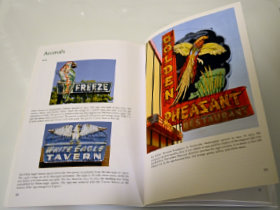 The “Animals” chapter is probably my favorite. Colorful birds, fish, and dogs draw customers to businesses of all sorts. Sequenced neon segments can make birds appear to fly and dogs and horses appear to run. A pig almost always indicates a BBQ restaurant although one sign shows a line of pigs merrily leaping in to a grinder to be made into sausage.
The “Animals” chapter is probably my favorite. Colorful birds, fish, and dogs draw customers to businesses of all sorts. Sequenced neon segments can make birds appear to fly and dogs and horses appear to run. A pig almost always indicates a BBQ restaurant although one sign shows a line of pigs merrily leaping in to a grinder to be made into sausage.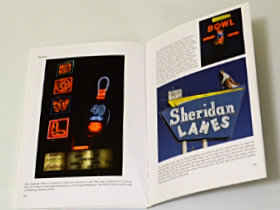 “Things” is as varied as you might imagine. Bowling balls and pins are popular as are skates, cars, and assorted food items. Donuts and ice cream cones seem to be the most common edibles used to attract customers. Bowling balls lend themselves to animation and when a neon bowling ball rolls, a strike is virtually guaranteed. Together, “Types of Signs” and the three chapters of the “theme” section make up a sort of sampler of the massive Roadside Architecture site. Picking less than 200 images to populate this sampler had to be tough but the choices made were excellent.
“Things” is as varied as you might imagine. Bowling balls and pins are popular as are skates, cars, and assorted food items. Donuts and ice cream cones seem to be the most common edibles used to attract customers. Bowling balls lend themselves to animation and when a neon bowling ball rolls, a strike is virtually guaranteed. Together, “Types of Signs” and the three chapters of the “theme” section make up a sort of sampler of the massive Roadside Architecture site. Picking less than 200 images to populate this sampler had to be tough but the choices made were excellent.